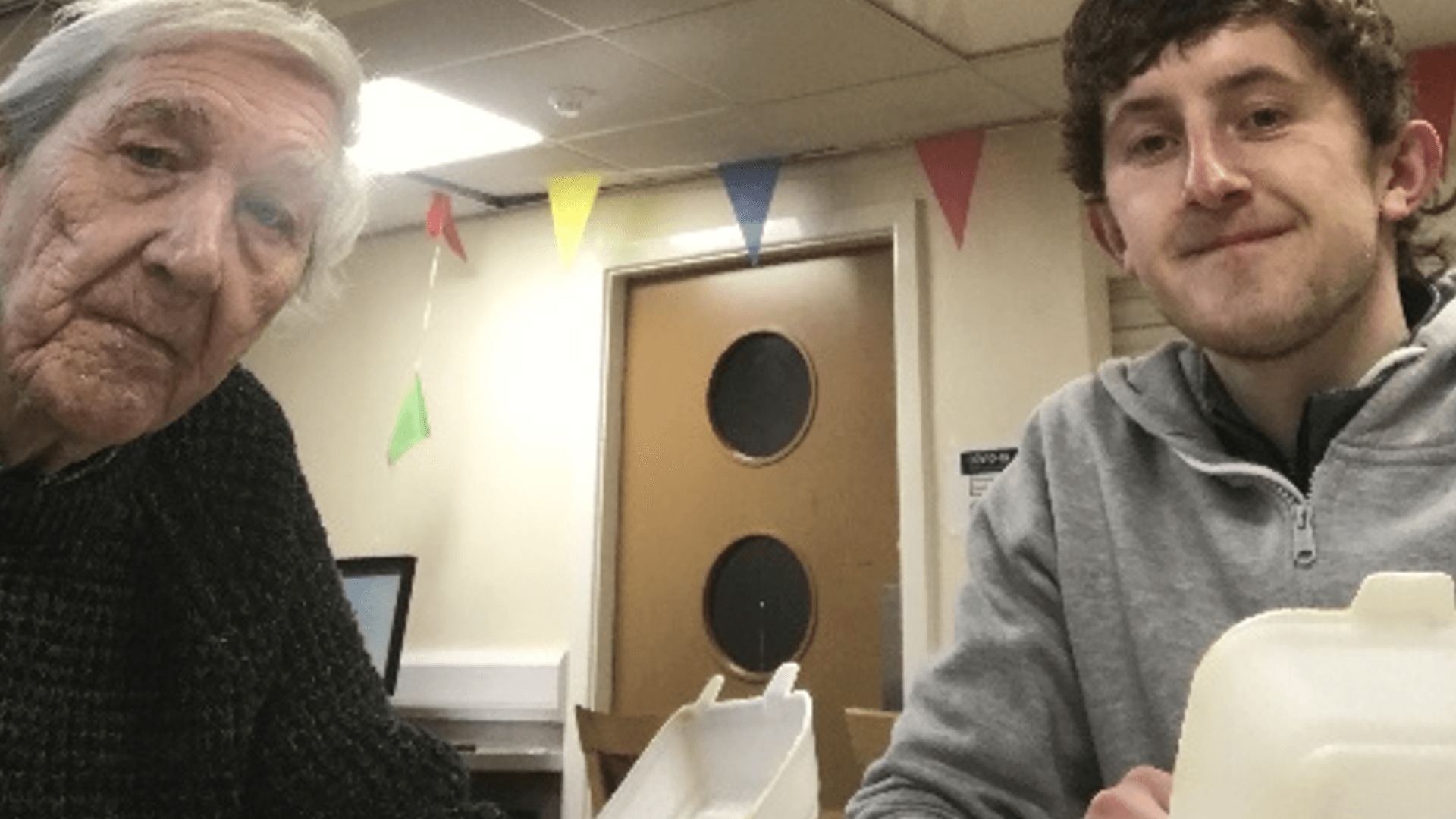
Turning tables: how new shared experiences deepen connection
Posted by The Cares Family on 5th July 2019
Please note: this post is 77 months old and The Cares Family is no longer operational. This post is shared for information only
It was a bitterly cold, frosty January morning as 30 people gathered in the entrance hall of Bacon’s College in Rotherhithe in the Docklands area of London. The group made an unlikely looking bunch. The oldest member was over 80, the youngest – apart from tennis coach Tim’s young baby – was 14. In this place of heritage and meaning, people from all backgrounds – younger and older people, black and white; wearing caps, woolly hats and headscarves – came together bound by little more than their limited knowledge of the game of table tennis.
Just two months earlier, a chance encounter between The Cares Family, Brighton Table Tennis Club and Bacon’s College had led to a new idea: to put together our organisational experience and our shared values to see whether we could build bridges and burst bubbles by getting people together who live side-by-side but who seldom interact, to play tennis and get chatting – to give people the space to do what people do best: connect.
As with so many parts of the capital and our other big cities, Rotherhithe is a place of rich experiences and rapid change. Young professionals aged 20-35 are the fastest growing group and the borough has a faster population turnover than both the London and England averages. The area also has the highest proportion of social housing in the country, is more ethnically diverse than the UK as a whole and is in the top 10 most densely populated areas in England. The students of Bacon’s College represent 33 different ethnicities and 54% qualify for ‘Pupil Premium’ support.
And so it was that 15 older people, many of whom participate in the amazing work of local charity Time and Talents, accepted the invitation of 15 Bacon’s College students aged 14 and 15 to join a weekly table tennis club. In an informal setting, neighbours learned strokes and improved their technique together. Each session started with refreshments and chats, followed by 45 minutes of activity, and finishing up with a quiz or game stretching from everything to the history of the local area to famous faces.
But the older and younger neighbours weren’t simply a group of beginners, or of different ages – they also represented many of the backgrounds, ethnicities, nationalities and classes of the area. These included people with disabilities, people with limited English, and many other diversities. But through the brilliance of BTTC coaches Tim and Harry, along with the light hearted atmosphere, everyone soon got in the swing of things.

For those of us who work in the social integration and connection arena, the challenge raised by funders and stakeholders is often on how to 'dispassionately' prove the impact of this sort of project. So, in a relaxed environment, we asked people about their existing connections at the start of the project: 27 of the 30 older and younger neighbours alike spent little or no time with the opposite generation outside of the family setting; the same proportion saw the chance to do so as unique. 40% were apprehensive about spending time together. The majority of the students said they perceived older people to be inactive.
After four weeks, the tables had turned. The majority of the students now believed older people to be active, as well as funny and interesting. 20% felt better able to put themselves in other people’s shoes. 90% of all the participants said they would like to spend more time participating in activities like this one with people of different ages from the local community.
And the stories were even more powerful than the data. One older neighbour said “the young people we met were active, interesting, funny” and “much wiser” than they’d expected. A younger neighbour said they felt “hopeful for the future” as a result of the clubs and sharing time with the older people they’d connected with. The sessions also boosted older neighbours’ self esteem, with one saying: “It made me feel good about myself. It was a real eye opener. I’d love to do more.”
This is just the start of The Cares Family’s new work trialling innovative ways to bring people together across perceived lines of difference. If you have an idea that you’d love to test out – one that will bridge divides in your community, and help people find connection in a disconnected age – we’d love to hear from you.


